My work horse microscope for some years has been a Zeiss Photomicroscope III. A range of planachros, Neofluars and planapos are owned, my favourites being the Neofluars. They offer better NAs than the achros, not as finnicky as the planapos and if my examples are typical, the least prone to delamination (so far!). I've also felt for edge of the envelope work such as diatom dotting that the Neofluars were superior to the planapos in terms of contrast as had fewer elements.
The Zeiss user's 'bible' for this era of 160 mm tube length optics is the 'Zeiss Optical Systems for the Microscope', the last for 160 mm believed to be dated 1971 and available on Gordon Couger's resource site science-info.net. I was aware from online sales that an extensive range of Plan-Neofluars were issued by Zeiss for this tube length, presumably post 1971 as not listed. Spike Walker on his invaluable website The Ultraphot Shop lists 15 with Zeiss codes and working distances. I have never owned any as they often attract feverish bidding to prices not prepared to pay. Sometimes more than the modern infinity equivalents of some makers.
Two examples were recently for sale in the UK for reasonable prices so treated myself to a 16/0.5 Ph Imm and 40/0.90 Ph Imm Plan-Neofluars. Being keen to learn more about the range the Zeiss archives kindly provided a four page technical brochure on the range, permission has been kindly given to share here (see Acknowledgements). (Please contact the author for a personal use copy). It is dated 1983 with the range being continued for the later and current infinity system.
My exploration of these objectives is ongoing but share some initial impressions of their practicality and performance compared with the closest non-plan Neofluar equivalents owned.
The increase in NA from the 16X Neofluar to Plan-Neofluar is modest 0.4 to 0.5. For the range of objectives owned the immersed Plan-Neofluar is not very practical if studying a subject through the mags as own a dry 25/0.6 Neofluar. It will likely be reserved for when the optimal image is sought at 16X either phase or brightfield. For the lucky owner of a set of immersed Plan-Neofluars going through the mag range would be possible immersed and Zeiss may have made the 16X immersed for this reason. It's unclear if the optical design of a modest NA would need to be immersed.
The 16/0.5 and 40/0.9 can both use water, glycerin or oil. The lower spec 16X has no collar to set the immersion type, whereas the 40/0.9 does. For the latter each liquid has a collar setting for use with or without a coverslip. My preference is water for both as easiest to clean. The working distance for the 16X is lowest for water 0.12 mm cf 0.14 for glycerin and 0.15 for oil (with coverslip, source the Zeiss technical brochure). The WD for the 40/0.9 is 0.13 with slip for all immersion types. These distances are close to those for the high mag oil immersions of typically 0.09 mm so even at 16X extra care needs to be taken with the immersed Plan-Neofluars. The viewing from the side while focusing down then focus back up approach is trickier with immersion and the trick of placing something dominant in the subject in field of view then gently rocking the x or y controls until in focus if need to focus down is safer.
The focal plane of the monochrome camera used without an eyepiece for diatom dotting or near IR work is a little lower than visual. This is not a problem for dry objectives but the setup is unsuited for the immersed Plan-Neofluars as WD so small it almost touches a slide. Will need to reassess this setup.
I don't have a high NA dry objective eg a 40/0.95 with collar. Have never been keen on these designs as find the setting of the optimal collar position tedious for multiple sources of slides. In this respect the 40/0.9 will be especially useful as a significant increase in NA from my 40/0.75 dry Neofluar with water being much preferred than using the 40/1.0 oil planapo owned. If the light used is dropped to 400 nm with interference filter on field lens using a 100W halogen as often do for diatom dotting an effective NA above 1.0 is also achieved.
Zeiss note that the Plan-Neofluars are suited for fluorescence work. Brightness is proportional to the 4th power of NA when the 16X Plan-Neofluar would be in theory be 2.5X brighter than the Neofluar. Given the loss of resolution for phase, the extra NA for the phase variants of the Plan-Neofluars is useful for optimal phase imagery at a given mag.
The dry 16/0.4 and 40/0.75 Ph Neofluar objectives owned do not give a very even colour background with DIC (I, II, III prisms and type II slider system). The two Plan-Neofluar equivalents seem better in this respect.
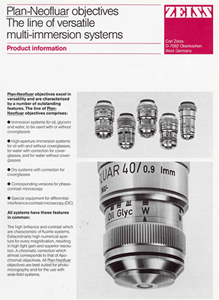
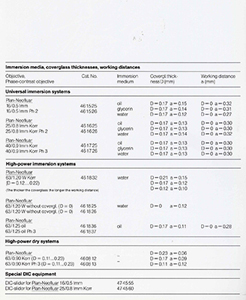
Lo-res scan of brochure kindly provided by the Zeiss archives.
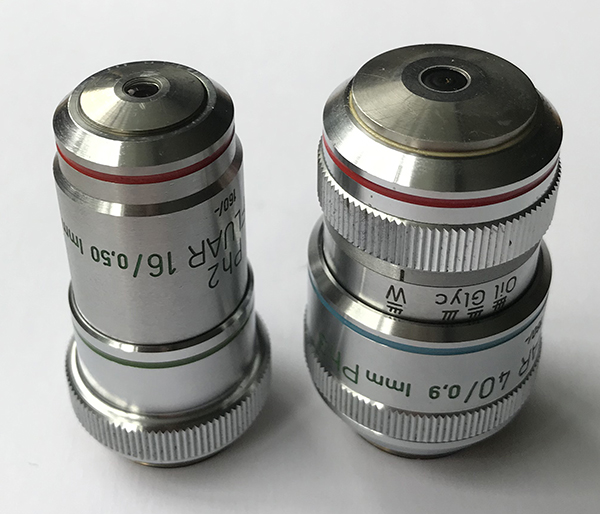
The 16/0.5 Imm and 40/0.9 Imm Plan-Neofluars
Images below. Canon 600D body, Zeiss 10X KpLW on collar for projection.
Diatom Lab 2.0 test slide.
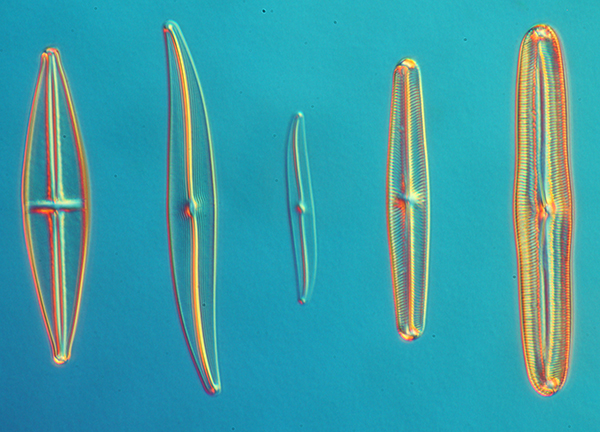
Plan-Neofluar water immersed 16/0.5 DIC type I slider with quarter wave retarder.
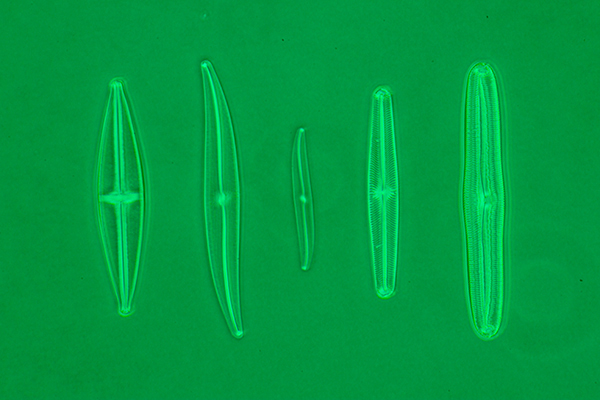
Plan-Neofluar water immersed 16/0.5 DIC phase.
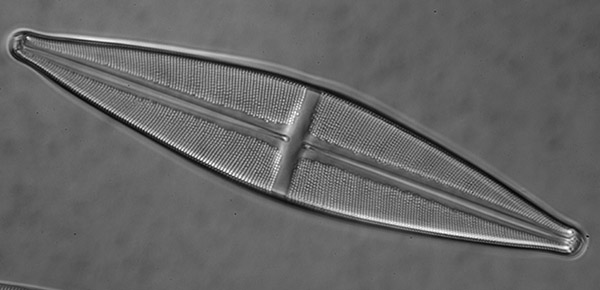
Plan-Neofluar water immersed 40/0.9 DIC with quarter wave retarder.
The type III slider seemed better than II.
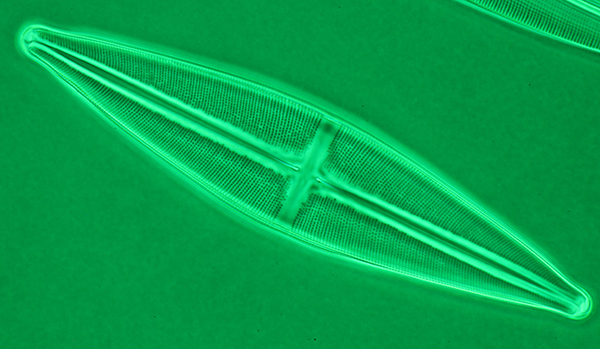
Plan-Neofluar water immersed 40/0.9 phase.
Comments to the author David Walker are welcomed.
Acknowledgement. Thank you to Ms. Dominique Schmied of the Zeiss Archives for supplying the informative brochure on the Zeiss Plan-Neofluar 160 mm tube length series. Thank you to Dr. Wolfgang Wimmer, Senior Manager Corporate Archives for permission to share.